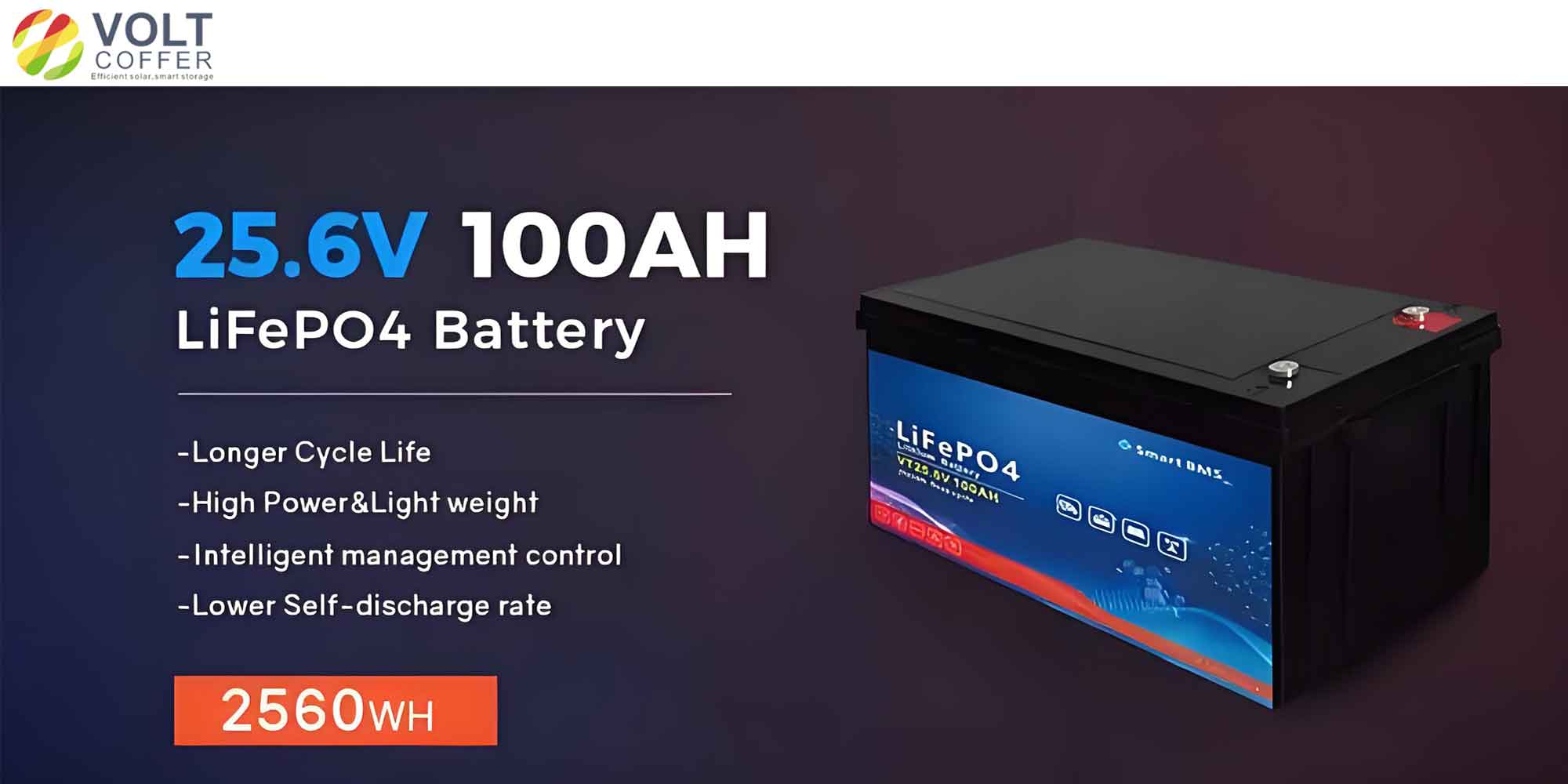The adoption of LiFePO4 battery in solar energy storage applications has revolutionized the way energy is stored and utilized. These batteries are favored for their exceptional safety, efficiency, and long lifespan. However, to maximize their performance and longevity, proper maintenance is essential. This article provides an in-depth look at the maintenance requirements and lifespan of LiFePO4 battery in solar energy storage applications, along with best practices for ensuring optimal performance.

Overview of LiFePO4 Battery
LiFePO4 battery is type of lithium-ion battery that uses lithium iron phosphate as the cathode material. They are known for their stability, safety, and long cycle life, making them ideal for solar energy storage systems.
Key Features of LiFePO4 Battery
- Safety: Superior thermal and chemical stability reduces the risk of overheating and fires.
- Long Cycle Life: Can endure thousands of charge and discharge cycles with minimal degradation.
- High Efficiency: Exhibits high charge and discharge efficiency, typically around 95%.
- Environmental Benefits: Made from non-toxic and abundant materials, reducing environmental impact.
Lifespan of LiFePO4 Battery
The lifespan of a LiFePO4 battery in solar energy storage applications is influenced by several factors, including usage patterns, charging and discharging cycles, and environmental conditions.
Cycle Life
One of the most critical aspects of battery’s lifespan is its cycle life, which refers to the number of complete charge and discharge cycles a battery can undergo before its capacity falls below a specified threshold. LiFePO4 battery typically offer a cycle life of 2,000 to 5,000 cycles.
| Parameter | Value |
|---|---|
| Typical Cycle Life | 2,000 – 5,000 cycles |
| Depth of Discharge (DoD) | Up to 80-90% |
| Retained Capacity | 70-80% after full cycles |
Calendar Life
Calendar life refers to the total lifespan of the battery from the time it is manufactured, regardless of the number of cycles it goes through. LiFePO4 battery generally have a calendar life of 10 to 15 years.
| Parameter | Value |
|---|---|
| Typical Calendar Life | 10 – 15 years |
| Environmental Factors | Temperature, Humidity |
| Impact on Performance | Minimal if maintained properly |
Maintenance Requirements for LiFePO4 Battery
Proper maintenance of LiFePO4 battery is essential to ensure their optimal performance and longevity. Here are some key maintenance practices:
Regular Inspection
Regular inspection of the LiFePO4 battery and associated components is crucial for early detection of potential issues.
- Visual Inspection: Check for any physical damage, corrosion, or leaks.
- Connection Check: Ensure all electrical connections are secure and free of corrosion.
- Monitoring System: Use a battery monitoring system to track performance metrics such as voltage, current, and temperature.
Temperature Management
Maintaining an optimal temperature range is vital for the performance and lifespan of LiFePO4 battery. Extreme temperatures can accelerate aging and reduce efficiency.
- Optimal Temperature Range: -20°C to 60°C
- Cooling Systems: Implement cooling systems in hot environments to prevent overheating.
- Heating Systems: Use heating systems in cold environments to maintain performance.
| Temperature Range | Impact on Battery |
|---|---|
| Below -20°C | Reduced performance |
| -20°C to 60°C | Optimal performance |
| Above 60°C | Accelerated aging |
Charging and Discharging Practices
Proper charging and discharging practices are crucial to extending the lifespan of LiFePO4 battery.
- Avoid Overcharging: Use charge controllers to prevent overcharging, which can damage the battery.
- Avoid Deep Discharging: Avoid discharging the battery below 20% of its capacity to prevent capacity loss.
- Balanced Charging: Ensure balanced charging of all cells to prevent imbalances and extend battery life.
Regular Cleaning
Keeping the battery and its surroundings clean is essential to prevent dust and dirt from affecting performance.
- Clean Terminals: Regularly clean the LiFePO4 battery terminals to prevent corrosion.
- Ventilation: Ensure proper ventilation to avoid dust accumulation and maintain optimal operating conditions.
Best Practices for Maximizing Lifespan
Implementing best practices can significantly extend the lifespan of LiFePO4 battery in solar energy storage applications.
Use Quality Components
Using high-quality components, such as inverters, charge controllers, and cables, ensures the reliability and efficiency of the entire system.
Monitor Performance
Regularly monitor the performance of the LiFePO4 battery using a battery management system (BMS) to detect and address issues early.
Implement Redundancy
Implementing redundancy in the system can prevent downtime and ensure continuous operation. For example, using multiple batteries can provide backup power in case one fails.
Plan for Scalability
Design the solar energy storage system with scalability in mind, allowing for easy expansion as energy needs grow.
Real-World Applications
Residential Solar Energy Storage
A residential solar energy storage system in California uses a 10 kW solar panel array and a 20 kWh LiFePO4 battery. The system provides reliable energy storage, reducing electricity bills and ensuring backup power during outages.
| Parameter | Value |
|---|---|
| Solar Panel Capacity | 10 kW |
| LiFePO4 Battery Capacity | 20 kWh |
| Annual Savings | $1,500 |
Commercial Solar Energy Storage
A commercial building in Texas implemented a solar energy storage system with a 50 kW solar panel array and a 100 kWh LiFePO4 battery. The system demonstrated significant improvements in energy efficiency and cost savings.
| Parameter | Value |
|---|---|
| Solar Panel Capacity | 50 kW |
| LiFePO4 Battery Capacity | 100 kWh |
| Annual Savings | $20,000 |
Conclusion
The maintenance and lifespan of LiFePO4 battery in solar energy storage applications are crucial for ensuring optimal performance and cost-effectiveness. By adhering to proper maintenance practices, such as regular inspection, temperature management, and balanced charging, users can maximize the lifespan and efficiency of their LiFePO4 battery. Real-world applications demonstrate the significant benefits and cost savings provided by these batteries in residential and commercial settings.
